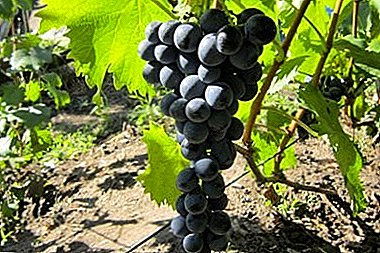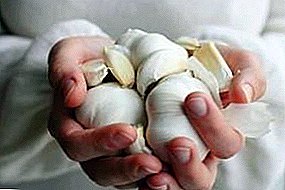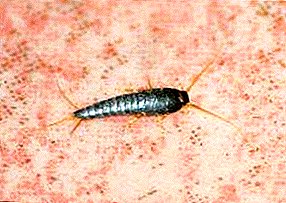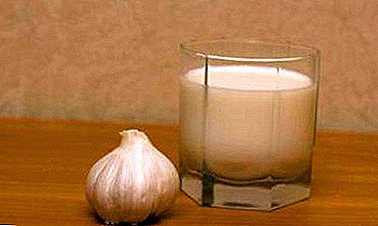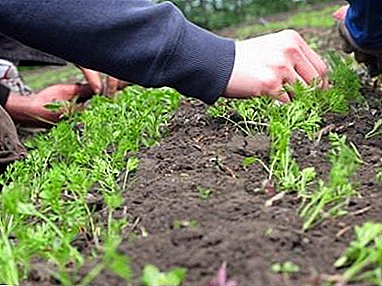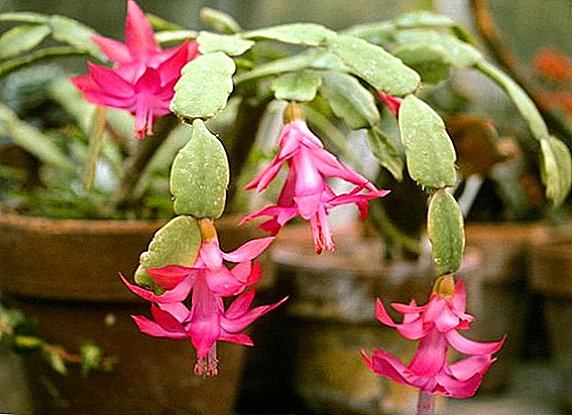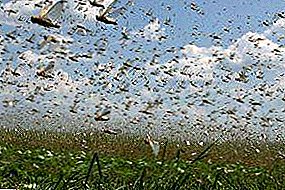
A relative of that very green grasshopper who “did not touch a goat,” can provoke the onset of famine in agricultural regions in just a few days of his stay in the fields.
The locust devours everything in its path, from grass to trees, in search of food, making even flights across the ocean, over distances of more than 5,000 km.
Giant, unhurried
The largest locust on the planet lives in the regions of the humid tropics. The size of females reaches 18 cm, weight - more than 10 gThe males are usually slightly smaller. The diet of these insects is not grass crops, traditional for the family, and grassy shrubs and tree branches. Habitat insects - North of South America.
Males are brighter than females the upper part of the calf is colored bright pink, with a common green-brown color of the bodies.. But an attractive look is deceptive - on the field a swarm of such giants can eat several thousand tons of crop.
Giant Locust photo below:


Green like a grasshopper
Very often, inexperienced gardeners take the most common grasshopper (not just harmless, but even useful) for the most terrible pest of fields and gardens - locust. The explanation is simple: green grasshoppers look very similar to a harmless locust filly. To distinguish these insects is very simple:
- the grasshopper is active at night, the locust - during the day;
- the grasshopper preys on small insects, the locust on plants only;
- The grasshopper has long paws and whiskers, and locusts have a longer belly.


Moroccan, resistant to poisons
Moroccan Locust - the real thunder of fields disaster, capable of a short time to destroy crops in vast areas. This insect belongs to the “true locust” family, it is capable of creating flocks of at least hundreds of millions of individuals, as well as migrating in search of food over great distances. The habitat of this locust species is Afghanistan, Iran, Kazakhstan, the Caucasus and Transcaucasia, the Crimea, and Central Asia.
Life "Moroccan" can proceed in two phases: solitary and gregarious. In solitary stage she is harmless, she has enough food, the larvae hatch and remain to live where they were born.
The larvae acquire a brighter color, become active, tend to gather in large flocks, and begin to migrate. Moroccan larvae are able to eat the amount of food ten times their mass. Herd insects travel long distances flying up to 20 hours a day at a speed of more than 15-20 km / h.

Externally, the Moroccan locust resembles its relative grasshopper. The color of her body is reddish yellowWith small dark spots and light cruciform pattern on the back, the hips of the hind legs are pinkish or yellow, the legs are red. The "Moroccan" mustache is shorter than that of the grasshopper.
“Moroccan” is dangerous because very prolific. On one square meter of unplowed field, the female lays several thousand eggs. When an insect is collected for migration, the number of individuals becomes incalculable, the length of the flock can be more than 200 km, the width - up to 10 km.
For these insects there are no unloved dishes - on their way they eat cereals, cotton, gourds and tobacco, fruit, common grass, branches and bark of trees.

Desert, extremely voracious
Desert Locust is a very voracious insect, for the day eating food as much as weighs itself. In search of food, it flies at least 1,200 km per day, although it moves only during the daytime, preferring to rest at night. A flock that has attacked the field can be placed in an area of 70-80 km, eagerly destroying any of the more than four hundred species of grassy plants and trees.
"Hermit" belongs to the real locust family. As they mature, the desert locust larvae acquire long wings, colorless, with dark specks. Adults are colored yellowish or greenish depending on what stage they are at.
It is found in Asia Minor, India and some parts of Africa, sometimes flies to the CIS countries from the territories of Iran and Afghanistan. This species of insects breeds massively and cyclically, on average four times a year, producing four generations of larvae: two winter and two summer. The flock reaches the maximum number of individuals in the seasons with heavy precipitation.
These insects can ignore most insecticides, which is no less a disaster for agrarian regions than the Moroccan locust.
Important! The difference between the desert locust and its close relatives is that it migrates not only periodically, to search for food at great distances, but also annually, to wet regions, for reproduction.


Locust control measures
Fight with Locust of any kind very difficultAfter all, these insects are perfectly able to adapt to adverse environmental conditions. Toxic chemicals against the most common locust species - Moroccan and desert - are practically powerless, especially since their use can be dangerous for agriculture.
Salvation from the Moroccan locust can be:
- biopesticides;
- noise from reproducers;
- domestic and wild birds.
The desert locust is still susceptible to most known insect control agents. Modern agriculture offers the following methods:
- insecticides;
- poison bait;
- digging up the earth.
A few words about migratory "Asians"
Separately need to say about the Asian migratory locust. This kind of insect able to daily absorb the amount of food equal to the volume of feed for two sheep. It is incredibly difficult to fight "Asian" - before it raids the fields, it forms difficult nests in hard-to-reach thickets in marshy areas. Winning Asian guests is possible only in the following ways:
- chemistry;
- burning out;
- digging


Locusts are sometimes called the jaws of the wind, and this fully reflects its essence. In regions where locust invasions are a frequent event, this phenomenon is described as a black cloud that is rapidly approaching, leaving only bare ground after disappearing. Therefore, learning to effectively combat this natural scourge is so important.



